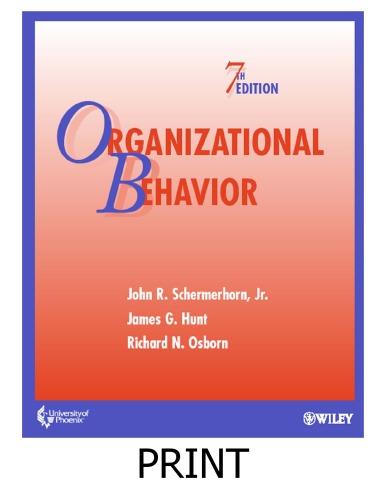Effective September 25, 1990, the management of the General Motors (GM) Parma, Ohio, stamping plant finalized another
Question:
Effective September 25, 1990, the management of the General Motors (GM) Parma, Ohio, stamping plant finalized another three-year local agreement with the United Auto Workers’ Union (UAW), Local 1005. It was the second local agreement they had negotiated together on time and without intervention from Detroit, since Parma’s self-described revolutionary agreement seven years previously. It was revolutionary because Parma’s management and union had abandoned their old hostilities and incorporated a team based approach to work, setting Parma in a new direction. The 1990 agreement formally documented their joint priorities of team-based work groups, extensive employee training, and a supportive working environment. The assistant personnel director for hourly employment, Bill Marsh, felt that, although this was another positive step in their ongoing relationship with Local 1005, the negotiating process seemed more “traditional” than the previous negotiation in 1987. Bob Lintz, the plant manager, agreed. Unexpectedly, the new Shop Committee chairman, who is Local 1005’s prime negotiator, had introduced over 600 demands at the start of Parma’s local contract negotiation. Even though management and the union were still able to finalize an agreement quickly, the tension created by the enormous list of demands still lingered. It could destroy the collaborative relationship that had been built over the past decade between management and the union leadership as well as the openness that Bob Lintz had managed to foster between himself and the hourly employees.
In the early 1980s, Parma’s corporate parent, GM, conducted a capacity rationalization study that concluded that almost 75 percent of Parma’s operations should either be eliminated or tranferred to other GM facilities within three years. Despite a one-year lapse in formal relations, and with no contract in effect, Parma’s management and Local 1005 responded to this threat to plant survival by conducting a joint effort to bring in new business. This joint effort led to a number of competitive assessments of Parma’s operations that identified several noncompetitive work practices. To acknowledge formally this new collaborative relationship, a new labor agreement was drafted and ratified in 1983 by Parma’s rank and file that resulted in fewer work classifications and emphasized a team-based approach to managing work groups.1 To implement this agreement, Parma’s top management and Local 1005 created the Team Concept Implementation Group, or TCIG, to introduce this new Team Concept and spent $40 million on extensive training of the entire workforce in problem solving, group dynamics, and effective communication skills. By 1990, the Team Concept had empowered hourly employees to assume more responsibility in their jobs and to focus on problem-solving and work-related matters and to move beyond status differences exemplified by position titles or neckties.
Roger Montgomery, who had chaired the Shop Committee from 1981 until 1990, felt that he had been able to put aside his past doubts of management’s sincerity and work with Bob to create an environment based on teamwork and trust. He credits Bob’s sincerity and openness with their ability to respect each other and work together for the good of the plant and its jobs. Roger believed that Bob had to overcome significant obstacles in creating this collaborative relationship at Parma, especially in convincing members of management and supervision. After years of open hostility between management and labor, Roger knew that Bob had supervisors and managers who didn’t want to change. After years of fighting for employees by getting doors on bathroom stalls and eliminating hall passes, Roger felt that his union team had achieved greater consensus about the need for change. He felt lucky because even though some of his shop committee might not have agreed with him about every detail, they did support his efforts out of loyalty to him and to his relationship with Bob. Bob Lintz also felt that his managers and Local 1005’s leaders had worked hard to overcome decades-long hostilities and build a positive and collaborative relationship.
Review Questions
1. How would you describe Parma’s environment in terms of its level of uncertainty and complexity?
2. How would you characterize Bob Lintz’s approach to communication, decision making, and the exercise of power to create change at Parma?
3. What are the most critical issues still facing Parma, and what should be done to address them?
4. How can resistance to change be overcome utilizing the existing workforce?
Step by Step Answer:

Organizational Behavior
ISBN: 9780470076255
7th Edition
Authors: John Schermerhorn, James G. Hunt, Richard N. Osborn





